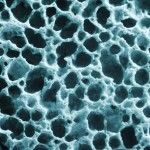
White spot lesions are often associated with fixed appliance orthodontic treatment. White spot lesions may remineralise following bracket removal and fluoride agents have been used to encourage remineralisation. Resin infiltration has been used as a caries prevention approach, but it may also mask white sport lesions (WSL).
The aim of this review was to evaluate the long-term efficacy of resin infiltration therapy for white sport lesions with regard to aesthetic appearance and long-term stability of the results.
Methods
Searches were conducted in the Cochrane Central Register of Controlled Trials (CENTRAL), Medline/PubMed, Embase LILACS, Clinicaltrials.gov and the OpenGrey databases with no language or date restrictions. Clinical studies assessing the efficacy of resin infiltration to mask white spot lesions were considered. Two reviewers independently selected studies and extracted data. The Cochrane risk of bias tool was used to assess randomised controlled trials (RCTs) and the ROBINS-I tool for non-randomised studies (NRS). Outcomes were reported a mean difference (MD) or standardised mean differences (SMD) with 95% confidence intervals (CI).
Results
- 11 studies (9 RCTs, 1 cohort, and one unclear) involving 1834 teeth in 413 patients were included.
- 2 studies were considered to be at low risk of bias, 7 had some concerns and two were at high risk.
- Resin infiltration was compared to fluoride varnish (4 studies), untreated control (4 studies), microabrasion (2 studies), or bleaching (2 studies).
- Meta—analysis found: –
- Compared to no treatment WSL treated with resin infiltration showed a significantly higher optical improvement using visual-tactile assessment, SMD = 24 (95%CI; 0.59 to 1.88) [ 3 studies]
- Compared to fluoride varnish WSL treated with resin infiltration showed a significantly higher optical improvement using DIAGNOdent readings, MD = 4.76 (95%CI; 0.74 to 8.7) [ 3 studies].
- In patients with fluorosis, bleaching prior to resin infiltration showed no difference in the masking effect compared to infiltration alone, MD = – 0.30 (- 0.98 to 0.39) [ 2 studies].
- The authors rated the certainty of evidence as moderate.
Conclusions
The authors concluded: –
Resin infiltration has a significantly higher masking effect than natural remineralization or regular application of fluoride varnishes. Thus, it seems to be a viable option to aesthetically mask enamel white spot lesions and mild to medium fluorosis. However, although the evidence was graded as moderate, this conclusion is based on only few well-conducted RCTs with moderate to high risks of bias.
Comments
We have previous looked at a review on this topic by Borges et al (Dental Elf – 14th Nov 2016). Their review included 11 studies 7 of which were RCTs. This new review has followed the usually systematic review approach searching a good range of databases and also identified 11 studies with 9 of these being RCTs. While the questions addressed by both reviews are similar there is probably only one study that is common to both reviews. None of the studies included in the Borges review were considered to be at low risk of bias while this review does include two studies assessed as being at low risk of bias. The findings do indicate a positive effect from resin infiltration however, only a small number of studies are available for the comparisons, so the findings need to be considered cautiously.
Links
Primary Paper
Bourouni S, Dritsas K, Kloukos D, Wierichs RJ. Efficacy of resin infiltration to mask post-orthodontic or non-post-orthodontic white spot lesions or fluorosis – a systematic review and meta-analysis. Clin Oral Investig. 2021 Aug;25(8):4711-4719. doi: 10.1007/s00784-021-03931-7. Epub 2021 Jun 9. PMID: 34106348; PMCID: PMC8342329.
Other references
Dental Elf – 14th Nov 2016
